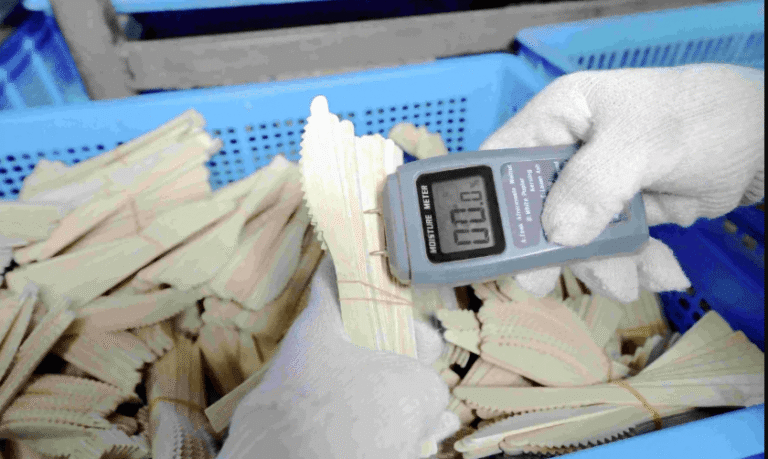Is Premium Dog Food Worth the Price? Here’s What to Know
Understanding What Defines Premium Dog Food
What exactly makes premium dog food different from the regular stuff you find at any old pet market near me? It’s more than just a fancy label or a higher price tag. It really boils down to a few key factors that impact your dog’s health and well-being.
High-Quality Ingredients and Sourcing
With premium dog food, you’re generally looking at ingredients that are, well, better. Think real meat, whole grains, and actual fruits and vegetables, not just by-products and fillers. The sourcing matters too. Where do these ingredients come from? Are they ethically and sustainably sourced? It’s about knowing what your dog is eating and where it came from. For example:
- Real meat sources (chicken, beef, fish)
- Whole grains (brown rice, quinoa, oats)
- Fruits and vegetables (blueberries, carrots, spinach)
Absence of Fillers and Artificial Additives
This is a big one. Premium dog food tends to avoid the cheap fillers and artificial stuff that can be found in lower-quality brands. We’re talking about things like corn, wheat, soy, artificial colors, flavors, and preservatives. These ingredients often offer little to no nutritional value and can even cause digestive issues or allergies in some dogs.
It’s important to read the ingredient list carefully. Look for recognizable ingredients and avoid foods with a long list of artificial additives.
Nutritional Completeness and Balance
It’s not just about what’s in the food, but also about the balance of nutrients. Premium dog food is formulated to provide a complete and balanced diet, meaning it contains the right amounts of protein, fat, carbohydrates, vitamins, and minerals that your dog needs to thrive. This is often determined by guidelines set by organizations like the Association of American Feed Control Officials (AAFCO). The nutritional profile should be appropriate for your dog’s life stage (puppy, adult, senior) and activity level. For example, a high-performance dog food will have a different nutritional balance than a food for a less active senior dog.
Potential Health Benefits of Premium Dog Food
Switching to premium dog food can really make a difference in your dog’s health. It’s not just about fancy packaging; it’s about what’s inside and how it affects your furry friend. You might even find better options than what’s at the local pet market near me.
Improved Digestion and Gut Health
Premium dog food often contains higher-quality ingredients that are easier for dogs to digest. This can lead to fewer digestive issues like gas, bloating, and diarrhea. The inclusion of prebiotics and probiotics also supports a healthy gut microbiome, which is vital for overall health. It’s like giving your dog’s tummy a little extra love. I’ve noticed a big difference in my own dog’s digestion since switching to a better food.
Shinier Coat and Healthier Skin
One of the most visible benefits of premium dog food is a healthier coat and skin. These foods are typically rich in omega-3 and omega-6 fatty acids, which are essential for maintaining skin hydration and reducing inflammation. A dull, flaky coat can be a sign of poor nutrition, so upgrading to a premium option can make a real difference. My neighbor switched her dog’s food, and the change in his coat was amazing!
Enhanced Energy Levels and Vitality
Better ingredients mean better energy. Premium dog food provides a more balanced and complete source of nutrients, which can lead to increased energy levels and overall vitality. Dogs fed on high-quality diets often exhibit more enthusiasm for play and exercise. It’s like they have a new lease on life. I’ve seen my dog go from napping all day to wanting to play fetch for hours after switching to premium dog food.
Reduced Risk of Allergies and Sensitivities
Many dogs suffer from food allergies and sensitivities, often triggered by low-quality ingredients and fillers found in cheaper dog foods. Premium dog food typically avoids these common allergens, such as corn, wheat, and soy, reducing the risk of allergic reactions. If your dog is constantly itching or has digestive issues, it might be worth considering a premium, limited-ingredient diet. It could save you a lot of trips to the vet.
Switching to premium dog food can be a game-changer for dogs with sensitivities. It’s about finding a food that works with their system, not against it. The difference in their comfort and well-being is often noticeable.
Evaluating the Cost-Benefit Analysis
Long-Term Veterinary Savings
Switching to premium dog food might seem expensive at first, but think about the vet bills. Cheaper food, full of fillers, can lead to health problems down the road. We’re talking allergies, digestive issues, and even more serious stuff that requires constant vet visits and medication. Investing in better food now could save you a ton of money (and stress) later on.
Consider this:
- Fewer trips to the vet for skin issues.
- Reduced need for allergy medications.
- Potentially avoiding costly surgeries related to poor diet.
Smaller Portions and Better Absorption
One thing I noticed when I switched my own dog to a higher-quality food is that I didn’t have to feed him as much. Because premium dog food is packed with nutrients and doesn’t have a bunch of empty calories, your dog gets more out of each bite. This means the bag lasts longer, which helps offset the higher price tag. Plus, better absorption means less waste – both in terms of uneaten food and, well, you know.
Overall Pet Well-being and Longevity
Ultimately, the biggest benefit of premium dog food is a happier, healthier dog. A good diet can improve their energy levels, coat condition, and overall vitality. And who doesn’t want their furry friend around for as long as possible? While there are no guarantees, providing your dog with the best possible nutrition can certainly contribute to a longer, healthier life. It’s like investing in their future. I always check the “pet market near me” for the best options.
Think of it this way: you’re not just buying food; you’re investing in your dog’s quality of life. A balanced diet can lead to fewer health problems, more energy for playtime, and a shinier coat. It’s about giving them the best chance to thrive.
Decoding Premium Dog Food Labels
Alright, so you’re standing in the pet market near me, staring at a bag of premium dog food, and the label looks like it’s written in another language. Don’t worry, it’s not as complicated as it seems. Let’s break down what you need to know to make an informed choice for your furry friend. It’s more than just fancy packaging; it’s about understanding what you’re actually feeding your dog.
Identifying Key Nutritional Guarantees
Guaranteed Analysis is your starting point. This section lists the minimum percentages of crude protein and crude fat, and the maximum percentages of crude fiber and moisture. It’s a legal requirement, but it doesn’t tell the whole story. For example, a high protein percentage doesn’t automatically mean it’s high-quality protein. Look beyond the numbers and consider the source of the protein. Is it from a named meat source, or a vague “animal by-product”? That makes a big difference. Also, pay attention to the AAFCO (Association of American Feed Control Officials) statement. This statement indicates whether the food is “complete and balanced” for a specific life stage (puppy, adult, senior, or all life stages). This is important because it means the food meets the minimum nutritional requirements for that life stage.
Understanding Ingredient Lists and Order
The ingredient list is ordered by weight, from heaviest to lightest. The first few ingredients make up the bulk of the food. Ideally, you want to see a named meat source (chicken, beef, lamb, etc.) listed first. Avoid foods where the first ingredient is a grain like corn or wheat, or a filler like “animal by-product meal.” The more specific the ingredient, the better. For example, “chicken meal” is better than “poultry by-product meal.” Also, be aware of ingredient splitting. This is when manufacturers break down a single ingredient into multiple smaller ingredients to push it further down the list. For example, instead of listing “corn,” they might list “ground corn,” “corn gluten meal,” and “corn bran.” It’s still corn, just disguised.
Recognizing Certifications and Standards
Look for certifications from reputable organizations. These certifications indicate that the food has met certain quality and safety standards. For example, an organic certification means that the ingredients were produced without pesticides or synthetic fertilizers. A non-GMO certification means that the ingredients were not genetically modified. However, keep in mind that certifications can add to the cost of the premium dog food, so weigh the benefits against your budget. Also, research the certifying organization to make sure it’s legitimate and has strict standards. Some certifications are more meaningful than others.
Reading dog food labels can feel overwhelming at first, but with a little practice, you’ll become a pro. Focus on the ingredient list, guaranteed analysis, and certifications. Don’t be afraid to ask your veterinarian for recommendations. They can help you choose a food that’s right for your dog’s individual needs.
When Premium Dog Food Might Be Essential
While all dogs need proper nutrition, there are times when premium dog food isn’t just a preference, but a necessity. It’s like choosing between a basic car and one with all the safety features – both get you from point A to point B, but one offers more protection and performance.
Dogs with Specific Dietary Needs
Some dogs have sensitive stomachs, allergies, or other health conditions that require a carefully formulated diet. For example, a dog with pancreatitis needs food that’s low in fat and easily digestible. A dog with food allergies might need a limited-ingredient diet to avoid common allergens like chicken or beef. In these cases, the higher quality ingredients and precise formulations of premium dog food can make a huge difference. It’s about finding something that works with their body, not against it. You might even find some options at a pet market near me that are specifically designed for these issues.
Puppies and Senior Dogs
Puppies and senior dogs have unique nutritional needs that aren’t always met by standard dog food. Puppies need more protein and calories to support their rapid growth, while senior dogs often need fewer calories and more fiber to help with digestion and weight management. Premium dog foods designed for these life stages are formulated to provide the right balance of nutrients. It’s like giving them the right fuel for their specific engine.
Breeds Prone to Certain Health Issues
Certain dog breeds are predisposed to specific health problems that can be managed or even prevented with the right diet. For example, large breed puppies are prone to hip dysplasia, and a diet with controlled calcium and phosphorus levels can help reduce their risk. Similarly, some breeds are more likely to develop heart problems, and a diet with added taurine and L-carnitine can support heart health. It’s about being proactive and giving them the best chance at a long and healthy life.
Choosing the right food for your dog is a big decision. It’s not just about filling their bowl; it’s about supporting their overall health and well-being. If you’re unsure whether premium dog food is right for your dog, talk to your veterinarian. They can help you assess your dog’s individual needs and recommend the best diet for them.
Transitioning Your Dog to Premium Food
Switching your dog’s food, especially to a higher quality option like [“premium dog food“], requires a thoughtful approach. A sudden change can upset their digestive system, leading to discomfort and other issues. Here’s how to make the transition smoothly.
Gradual Introduction Methods
The key to a successful transition is to introduce the new food slowly. Start by mixing a small amount of the [“premium dog food”] with your dog’s current food. Over several days, gradually increase the proportion of the new food while decreasing the old food. Here’s a sample schedule:
- Days 1-3: 25% new food, 75% old food
- Days 4-6: 50% new food, 50% old food
- Days 7-9: 75% new food, 25% old food
- Day 10: 100% new food
This gradual approach allows your dog’s digestive system to adjust to the new ingredients and reduces the risk of digestive upset. If you notice any adverse reactions, slow down the transition or consult your vet. You can find a great selection of [“premium dog food”] at your local pet market near me.
Monitoring for Digestive Changes
As you transition your dog to [“premium dog food”], keep a close eye on their stool. Changes in consistency, color, or frequency can indicate that their digestive system is struggling to adapt. Other signs of digestive upset include:
- Gas
- Vomiting
- Loss of appetite
If you notice any of these signs, reduce the amount of new food and increase the amount of old food. If the symptoms persist, it’s best to consult with your veterinarian. Remember, every dog is different, and some may need a slower transition than others.
Consulting Your Veterinarian
Before making any significant changes to your dog’s diet, it’s always a good idea to consult with your veterinarian. They can provide personalized recommendations based on your dog’s age, breed, health condition, and activity level. Your vet can also help you choose the right [“premium dog food”] to meet your dog’s specific nutritional needs.
Switching to a new food can be a bit tricky, but with patience and careful observation, you can make the transition smoothly and ensure your dog enjoys the benefits of a high-quality diet. Don’t rush the process, and always prioritize your dog’s well-being.
Conclusion
So, what’s the final word on premium dog food? It’s not a simple yes or no. Sometimes, the pricier stuff really does make a difference, especially if your dog has special needs or allergies. Other times, a good quality, more affordable brand might be just fine. The main thing is to do a little homework, read those labels, and maybe chat with your vet. They can help you figure out what’s best for your furry friend and your wallet. At the end of the day, a happy, healthy dog is what we’re all aiming for, no matter the cost of their kibble.






